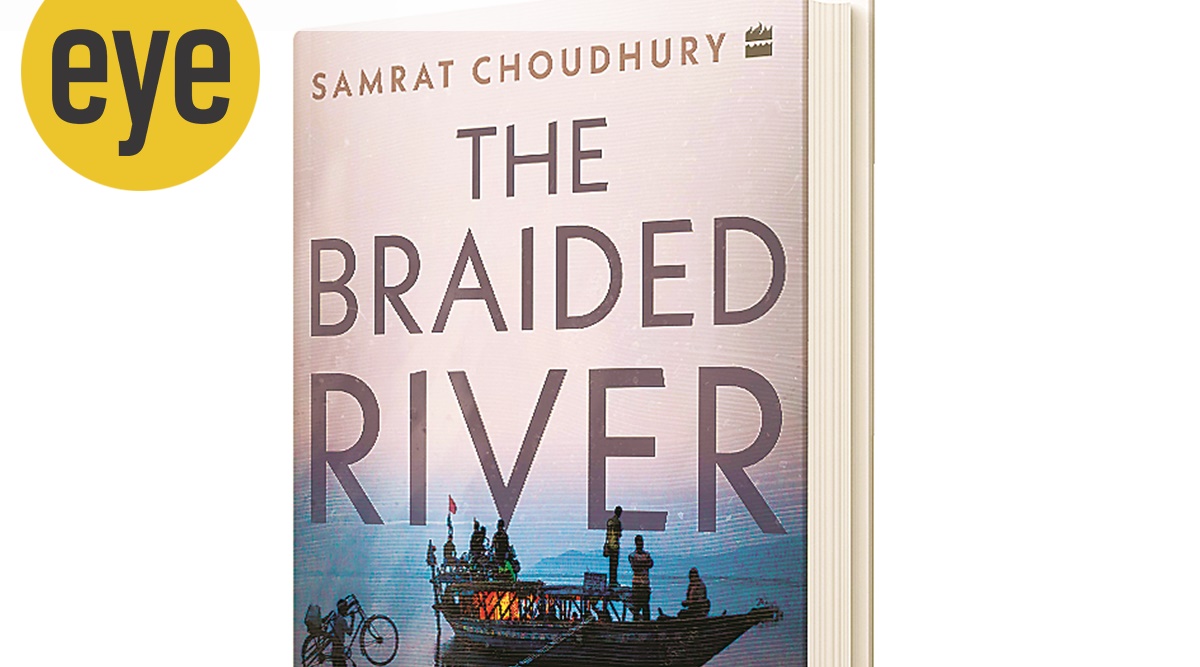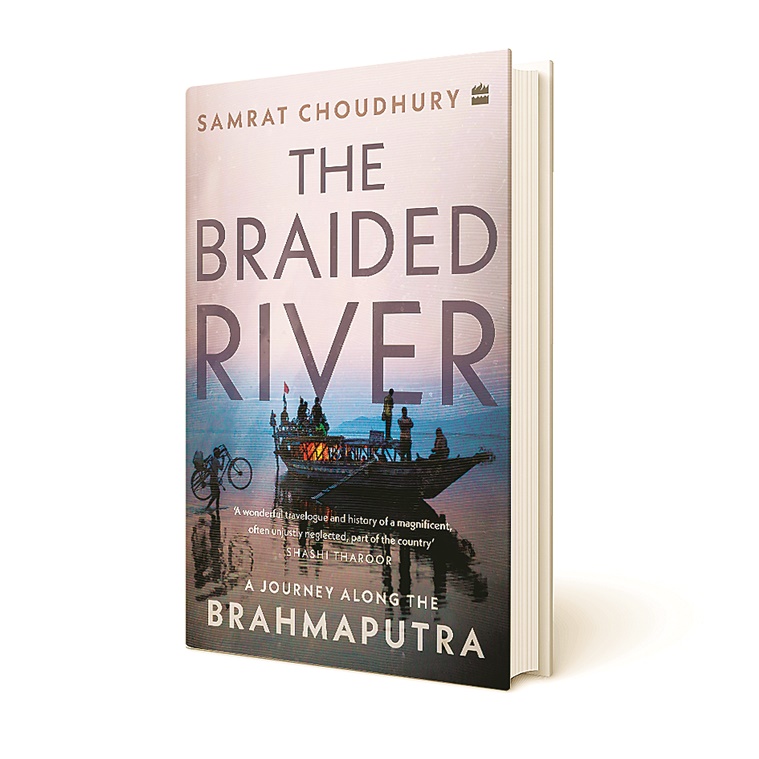May 23, 2021 6:20:38 am
 Here's Samrat Choudhury's longer online book review
Here's Samrat Choudhury's longer online book review By Rajat Ubhaykar
In its sheer volume and width, the Brahmaputra is an Indian river like no other. I still remember the sense of profound awe I felt when I first crossed the river on my way from Guwahati to Siliguri. As the bridge stretched on with no land in sight, the Brahmaputra seemed less river to me, and more ocean.
In The Braided River, journalist Samrat Choudhury takes on the formidable task of documenting the human history of this confounding “waterworld” with the “fresh eyes of an outsider, and something of the knowledge of an insider”. It is a unique, shifting landscape that he traverses, composed of chars and chaporis (river islands and sandbanks), constantly punctuated by the sound of the river devouring the land, its people struggling to keep up with this ceaseless “cycle of creation and destruction”. However, Choudhury doesn’t confine himself to the river itself and often ventures inland to set the larger context for the drama of human life in the Brahmaputra Valley.
Much like the river, the structure of the book is braided, in that it’s composed of short thematic chapters dealing with strands of historical analysis, travel anecdotes, and character sketches that combine to yield an expansive narrative. He begins his account with a brief natural history of the Brahmaputra and the mythology surrounding it, before delving into his travels along the course of the river, from Gelling near the Tibetan border to Goalanda in Bangladesh where the Brahmaputra (or Jamuna) — a river of many names — meets the Ganga.
The first section of the book deals with the Lohit, Dibang and Siang rivers that combine near the Dibru Saikhowa National Park to become the mighty Brahmaputra. Choudhury liberally peppers the narrative with colonial-era accounts that evoke the perilous journeys undertaken by surveyors to map the course of the river, the upper reaches of which were once thought to harbour the world’s greatest waterfall (instead, it turned out to have the world’s deepest canyon). Here, an important point Choudhury raises is how excessive anxiety in India about Chinese dam-building activity along the Siang (called Yarlung Tsangpo in Tibet) may be misplaced since the Brahmaputra acquires much of its volume from rain fed streams in Arunachal Pradesh and other tributaries in Assam.
 Here’s Samrat Choudhury’s longer online book review
Here’s Samrat Choudhury’s longer online book review
The next two sections that form the bulk of the book are largely set in Assam, an astoundingly multi-lingual, multi-ethnic state that’s a veritable “India in miniature”. Like any good travelogue, Choudhury takes us on a journey through both space and time, with a host of fascinating digressions into Assam’s past – from the process of Assamese identity formation in the medieval era through assimilation into the Ahom administration; the surreal episode of Guru Tegh Bahadur being roped in by the Mughals to counter Assam’s black magicians and sorceresses; the story of tea cultivation in Assam; from how steamboats dramatically reduced travel times in the 19th century; to how the colonial encounter led to a “new imagination of all frontiers as lines of control rather than zones of transition” which lies at the root of Sino-Indian border tensions in the region today.
Along the way, Choudhury encounters a diverse range of characters: scamsters, timber smugglers, environmentalists, suspicious soldiers, boatmen, and tea estate managers who lead lifestyles that still “retain remnants of the old colonial aura”. Choudhury does a great job of foregrounding the people he meets instead of making the book about himself. The writing is lucid and doesn’t seek to draw attention to itself. It’s apparent that an impressive amount of research has gone into making the book a well-rounded guide to the Brahmaputra valley for the lay reader. The book also has some gorgeous photographs by Akshay Mahajan, Choudhury’s travel companion on parts of the journey.
However, one drawback with the book’s structure was that the short chapters sometimes ended abruptly without any closure, which marred the otherwise smooth flow of the narrative. Also, the fact that Bangladesh was covered only fleetingly in the final 20 pages seemed like a missed opportunity to document the political economy of riverine Bangladesh from an Indian perspective. But these minor quibbles aside, The Braided River is a delightful work of travel literature that succeeds admirably in doing what all good travel writing ought to do: open the reader’s eyes to the beauty and wonder inherent in the ordinary and the everyday. I hope it inspires budding travel writers to undertake similar expeditions that do justice to the various regions and sub-regions of India.
Rajat Ubhaykar is the author of Truck de India!: A Hitchhiker’s Guide to Hindustan
- The Indian Express website has been rated GREEN for its credibility and trustworthiness by Newsguard, a global service that rates news sources for their journalistic standards.
 Continue with Facebook
Continue with Facebook Continue with Google
Continue with Google
